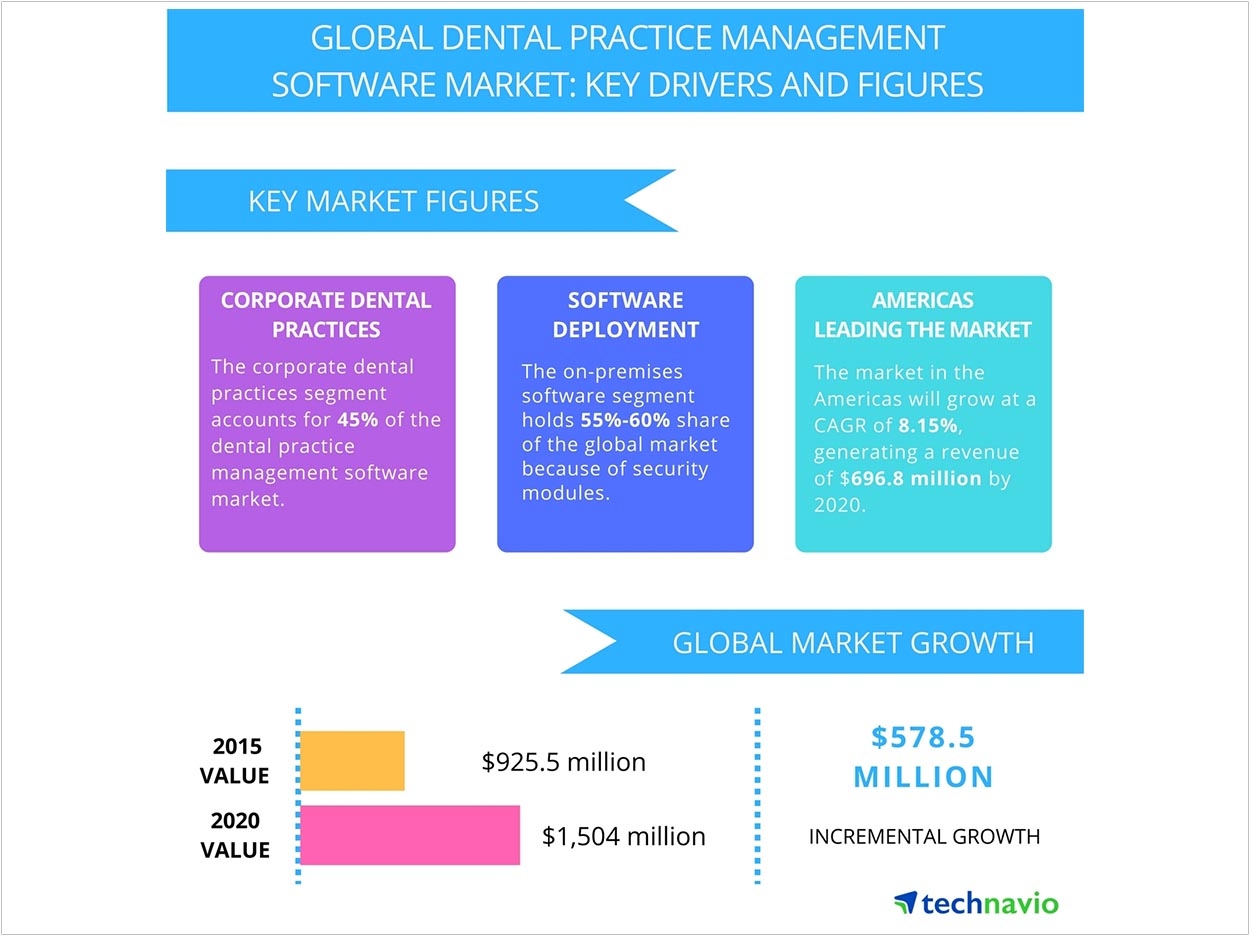
As many practitioners move from the analog world to the digital realm, dental practice management software will play a greater role in their work. According to market research company Technavio, 3 trends will drive the use of this software: an increasing focus on detailed and customized reporting, data analytics and business intelligence in the software, and the increased integration of digital imaging with the software.
“The proliferation of patient data, need to gain competitive advantage, and fulfill compliance regulations has forced dental practices to turn to dental practice management software to reduce risks and improve their operational efficiency,” said Ishmeet Kaur, a lead analyst at Technavio specializing in research on the enterprise application sector.
Research and Markets reports that the global market for dental practice management software will grow by a compound annual growth rate of 10.2% from 2016 to 2020. Meanwhile, Grand View Research expects the market to reach $1.59 billion by 2024, also propelled by the increasing geriatric population and greater oral healthcare expenditures.
According to Technavio, reporting has become an essential part of dental practice management to gain meaningful insights into operations. Dentists don’t want to guess when it comes to making business decisions, Technavio stated, so they rely on the reporting capabilities of their software systems to provide real numbers and data in reports on unassigned credits, fulfilled and unfulfilled appointments, post-op calls, and more that can help them gauge the health of their practices.
“The reports can be reviewed either on a daily or weekly basis for practice management to gain more knowledge on prescriptions, deleted transactions, delinquent accounts, outstanding claims, and credit distribution audit trails,” said Kaur.
Most industry verticals have started adopting data analytics and business intelligence solutions to get a clear understanding of a company’s internal data using tools and techniques like performance monitoring, data mining, reporting, and benchmarking to improve decision making and to identify new opportunities for business expansion, Technavio said. In 2015, the US healthcare industry was the leading adopter of data analytics to improve clinical care quality, reduce operational cost, and improve the effectiveness of day-to-day activities.
The analytics and business intelligence capabilities of dental practice management software explore untapped information such as hidden trends and patterns in patient data, Technavio said. They also enable dentists to use this information to gain insights into the current performance of their practices and support decision-making for better management.
Finally, the integration of digital imaging capabilities with dental practice management software is gaining popularity, according to Technavio. This integration is designed to help dentists to clearly study their patients’ dental conditions using digital x-rays and simultaneously perform treatment planning. It also helps them reduce x-ray exposure time by 70%, make immediate diagnoses, and easily develop treatment plans.
Related Articles
Open-Source 3-D Imaging Software Improves Precision
Software Update Expands Design Capabilities
Update Improves 3-D Imaging Software












